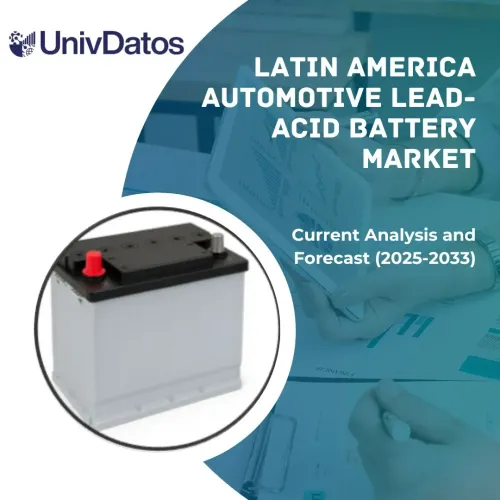- Home
- About Us
- Industry
- Services
- Reading
- Contact Us
Automotive Occupant Sensing Market: Current Analysis and Forecast (2024-2032)
Emphasis on By Type (Pressure Sensor, Seat Belt Tension Sensor, Seat Belt Buckle Sensor, Image Sensor, Weight Sensor, Capacity Sensor, Ultrasonic Sensor, Others); By Vehicle Type (Passenger Cars, Commercial Vehicle (LCV, HCV)), By Sales Channel ( OEM, Aftermarket), and Regions (North America (The US, Canada, Rest of North America), Europe (Germany, The UK, France, Italy, Spain, Rest of the Europe), Asia-pacific (China, Japan, India, Rest of the Asia-pacific), Rest of the World)
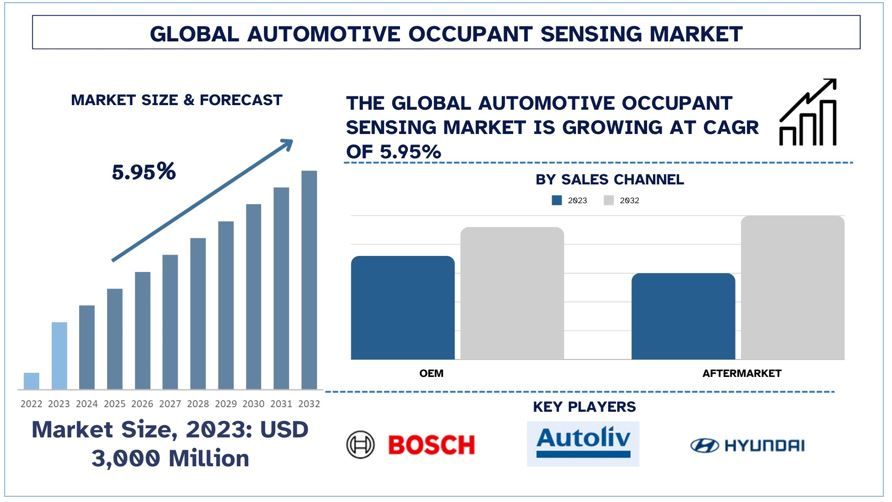
Global Automotive Occupant Sensing Market Size & Forecast
The Global Automotive Occupant Sensing market was valued at USD 3,000 million in 2023 and is expected to grow at a strong CAGR of around 5.95% during the forecast period (2024-2032) owing to rising demand for automotives with safety solutions across the globe.
Global Automotive Occupant Sensing Market Analysis
Global Automotive Occupant sensing market is witnessing a notable growth across the globe. Automotive occupant sensing system comprises of various sensor as seat belt tension sensor, pressure sensors under seat, image sensor, weight sensors, etc. These sensors help comprehend the system in the vehicle to provide added safety features as provide seat belt alarm, deploying the necessary air bags in case of collision. Additionally, these automotive occupant sensing systems also offer better passenger safety and protection with the help of image sensing and ultrasonic techniques in coordination with the advanced driver assistance systems.
The Global Automotive Occupant Sensing market was valued at USD 3000 million in 2023 and is expected to grow at a strong CAGR of around 5.95% during the forecast period (2024-2032). One of the factors that has attributed to the growth of automotive occupant sensing systems is rising sales of automotive vehicles across the globe. As the income in the emerging economies is rising the customers are looking forward to passenger cars for a safer commute. According to the International Organization of Motor Vehicle Manufacturers (OICA), the total sales of automotive (including both passenger cars and commercial vehicles) in 2020 was 79.66 million which rose to 92.72 million in year 2023. This is approximately 16.3% of total growth in the respective period.
Additionally, countries as India, China, the US, Indonesia, etc., have witnessed growth in the sales of automotives in the respective period which is a positive factor for the growth of automotive occupant sensing systems considering safety becoming one of the key factor among the automotive manufacturers and regulatory bodies.
Considering the factors mentioned it is expected that the positive growth in the demand for automobiles in the coming years would be conducive for the safety solutions integrated into the vehicles. Furthermore, the customers with the increased disposable income would further focus on the options offering a robust safety systems further promoting the market growth. Henceforth, the demand for the automotive occupant sensing systems is expected to exhibit considerable growth during 2024-2032.
Global Automotive Occupant Sensing Market Trends
This section discusses the key market trends that are influencing the various segments of the Global Automotive Occupant Sensing Market as identified by our team of research experts.
Rising Demand for ADAS based Vehicles
With the growing demand for Advanced Driver Assistance Systems (ADAS), there is a growing demand for integrating sensors that promote safety and stability to the vehicles. As ADAS assists the drivers while keeping the vehicle in lane, emergency braking in case of any obstacles. These features also require additional safety features in the cabin of the vehicles as sudden braking requires proper seat belt tightening of all the occupants. Additionally, as the higher sales of vehicles in the emerging regions has lead to increased traffic on the roads due to which the integration of ADAS and other safety features as occupant sensing systems have become paramount.
Additionally, occupant sensing systems are integral part of the ADAS as the sensors in each of the seats determine that in an accident situation which airbags need to be deployed with respect to the number of passengers present in the vehicles.
Considering the rising demand for ADAS based vehicles across the globe the demand for automotive occupant sensing systems would further rise during 2023-2032.
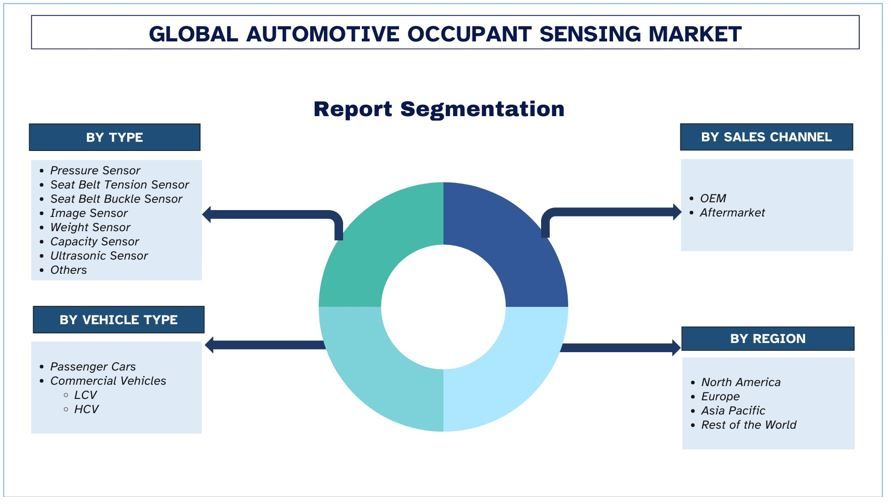
Asia Pacific is Expected to Hold Major Market Share During Forecast Period
Asia Pacific Automotive occupant sensing market has held a sizable market share during 2022 & 2023. Some of the key factors that have attributed to the rise of the market are higher sales of automotive vehicles in the region. Rapid growth of middle-class population in the emerging countries as China, India, Indonesia, Malaysia, South Korea, Australia, etc. Additionally, the regions are also witnessing a incessant push from the government towards the automobile manufacturers to integrate safety systems into the vehicles. Furthermore, more and more companies focusing on increasing the safety and crash test rating in the vehicles have also been extensively investing into safety technologies of which automotive occupant sensing system are notable ones.

Global Automotive Occupant Sensing Industry Overview
The Global Automotive Occupant Sensing market is competitive and fragmented, with the presence of several global and international market players. The key players are adopting different growth strategies to enhance their market presence, such as partnerships, agreements, collaborations, new product launches, geographical expansions, and mergers and acquisitions. Some of the major players operating in the market Robert Bosch GmbH, Joyson Safety Systems, Autoliv Inc., Continental AG, Hyundai Motor Company, Flexpoint, Denso Corporation, Valeo SA, ams-OSRAM AG, and IEE Smart Sensing Solutions.
Global Automotive Occupant Sensing Market News
- In 2024, Novelda announced to launch ultra wide band radar sensors for passenger and child protection sensors.
- In 2024, ZF Passive Safety Systems announced to launch Multi-Stage Load Limiter (MSLL), which adapts the restraining force of the belt to the stature and size of the occupants.
Global Automotive Occupant Sensing Market Report Coverage
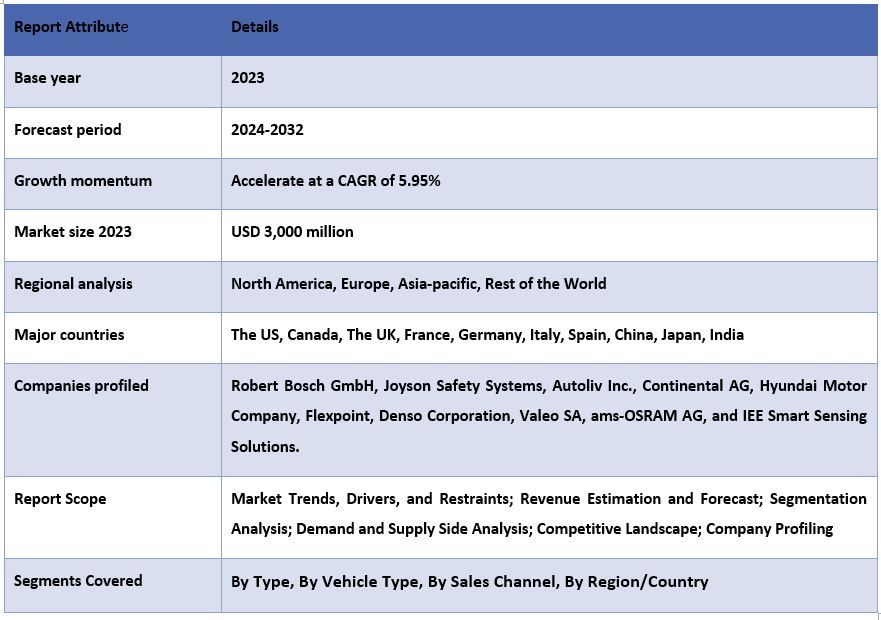
Reasons to buy this report:
- The study includes market sizing and forecasting analysis validated by authenticated key industry experts.
- The report presents a quick review of overall industry performance at one glance.
- The report covers an in-depth analysis of prominent industry peers with a primary focus on key business financials, product portfolios, expansion strategies, and recent developments.
- Detailed examination of drivers, restraints, key trends, and opportunities prevailing in the industry.
- The study comprehensively covers the market across different segments.
- Deep dive regional level analysis of the industry.
Customization Options:
The Global Automotive Occupant Sensing market can further be customized as per the requirement or any other market segment. Besides this, UMI understands that you may have your own business needs; hence, feel free to connect with us to get a report that completely suits your requirements.
Table of Content
Research Methodology for the Global Automotive Occupant Sensing Market Analysis (2024-2032)
Analyzing the historical market, estimating the current market, and forecasting the future market of the Global Automotive Occupant Sensing market were the three major steps undertaken to create and analyze the adoption of Global Automotive Occupant Sensing in major regions globally. Exhaustive secondary research was conducted to collect the historical market numbers and estimate the current market size. Secondly, to validate these insights, numerous findings and assumptions were taken into consideration. Moreover, exhaustive primary interviews were also conducted with industry experts across the value chain of the Global Automotive Occupant Sensing market. Post assumption and validation of market numbers through primary interviews, we employed a top-down/bottom-up approach to forecasting the complete market size. Thereafter, market breakdown and data triangulation methods were adopted to estimate and analyze the market size of segments and sub-segments of the industry. Detailed methodology is explained below:
Analysis of Historical Market Size
Step 1: In-Depth Study of Secondary Sources:
A detailed secondary study was conducted to obtain the historical market size of the Global Automotive Occupant Sensing market through company internal sources such as annual reports & financial statements, performance presentations, press releases, etc., and external sources including journals, news & articles, government publications, competitor publications, sector reports, third-party database, and other credible publications.
Step 2: Market Segmentation:
After obtaining the historical market size of the Global Automotive Occupant Sensing market, we conducted a detailed secondary analysis to gather historical market insights and share for different segments & sub-segments for major regions. Major segments are included in the report as By Type, By Vehicle Type and By Sales Channel. Further regional/country-level analyses were conducted to evaluate the overall adoption of testing models in that region.
Step 3: Factor Analysis:
After acquiring the historical market size of different segments and sub-segments, we conducted a detailed factor analysis to estimate the current market size of the Global Automotive Occupant Sensing market. Further, we conducted factor analysis using dependent and independent variables such as By Type, By Vehicle Type and By Sales Channel in the Global Automotive Occupant Sensing market. A thorough analysis was conducted for demand and supply-side scenarios considering top partnerships, mergers and acquisitions, business expansion, and product launches in the Global Automotive Occupant Sensing market sector across the globe.
Current Market Size Estimate & Forecast
Current Market Sizing: Based on actionable insights from the above 3 steps, we arrived at the current market size, key players in the Global Automotive Occupant Sensing market, and market shares of the segments. All the required percentage shares split and market breakdowns were determined using the above-mentioned secondary approach and verified through primary interviews.
Estimation & Forecasting: For market estimation and forecast, weights were assigned to different factors, including drivers & trends, restraints, and opportunities available for the stakeholders. After analyzing these factors, relevant forecasting techniques, i.e., the top-down/bottom-up approach, were applied to arrive at the market forecast for 2032 for different segments and sub-segments across the major markets globally. The research methodology adopted to estimate the market size encompasses:
- The industry’s market size, in terms of revenue (USD) and the adoption rate of the Global Automotive Occupant Sensing market across the major markets domestically
- All percentage shares, splits, and breakdowns of market segments and sub-segments
- Key players in the Global Automotive Occupant Sensing market in terms of products offered. Also, the growth strategies adopted by these players to compete in the fast-growing market.
Market Size and Share Validation
Primary Research: In-depth interviews were conducted with the Key Opinion Leaders (KOLs), including Top Level Executives (CXO/VPs, Sales Head, Marketing Head, Operational Head, Regional Head, Country Head, etc.) across major regions. Primary findings were then summarized, and statistical analysis was performed to prove the stated hypothesis. Inputs from primary research were consolidated with secondary findings, hence turning information into actionable insights.
Split of Primary Participants in Different Regions
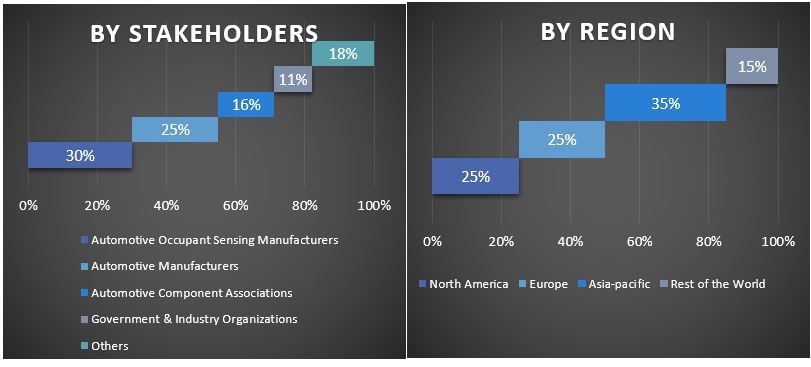
Market Engineering
The data triangulation technique was employed to complete the overall market estimation and to arrive at precise statistical numbers for each segment and sub-segment of the Global Automotive Occupant Sensing market. Data was split into several segments and sub-segments after studying various parameters and trends By Type, By Vehicle Type and By Sales Channel in the Global Automotive Occupant Sensing market.
The main objective of the Global Automotive Occupant Sensing Market Study
The current & future market trends of the Global Automotive Occupant Sensing market were pinpointed in the study. Investors can gain strategic insights to base their discretion for investments on the qualitative and quantitative analysis performed in the study. Current and future market trends determined the overall attractiveness of the market at a regional level, providing a platform for the industrial participant to exploit the untapped market to benefit from a first-mover advantage. Other quantitative goals of the studies include:
- Analyze the current and forecast market size of the Global Automotive Occupant Sensing market in terms of value (USD). Also, analyze the current and forecast market size of different segments and sub-segments.
- Segments in the study include areas By Type, By Vehicle Type and By Sales Channel.
- Define and analyze the regulatory framework for global Automotive Occupant Sensing industry.
- Analyze the value chain involved with the presence of various intermediaries, along with analyzing customer and competitor behaviors of the industry.
- Analyze the current and forecast market size of the Global Automotive Occupant Sensing market for the major regions.
- Major countries of regions studied in the report include North America (The US, Canada, and Rest of North America), Europe (The UK, France, Germany, Italy, Spain, Rest of Europe), Asia-pacific (China, Japan, India, Rest of the Asia-pacific), Rest of the World
- Company profiles of the Global Automotive Occupant Sensing market and the growth strategies adopted by the market players to sustain in the fast-growing market.
- Deep dive regional level analysis of the industry
Frequently Asked Questions FAQs
Q1: What is the current market size and growth potential of the Global Automotive Occupant Sensing market?
Q2: What is the driving factor for the growth of the Global Automotive Occupant Sensing market?
Q3: Which segment has the largest share of the Global Automotive Occupant Sensing market by type?
Q4: Which region will dominate the Global Automotive Occupant Sensing market?
Related Reports
Customers who bought this item also bought

